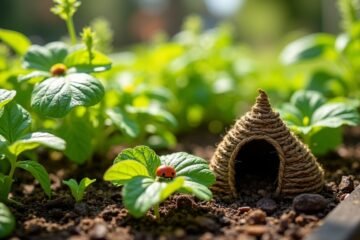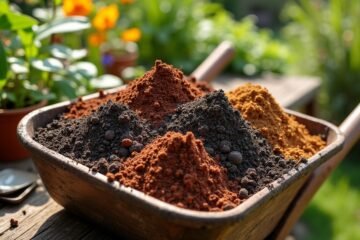If you’re ready to dig into seasonal planting in raised beds, you’re in for a treat! Imagine plump tomatoes basking in the summer sun or vibrant kale braving the chill of autumn. You’ll want to know your climate zone—like a cozy outfit for your plants! Mix compost for health and pair crops like basil with tomatoes to boost growth. Curious about more tips to turn your garden into a colorful feast? There’s still plenty to discover!
Understanding Your Climate Zones
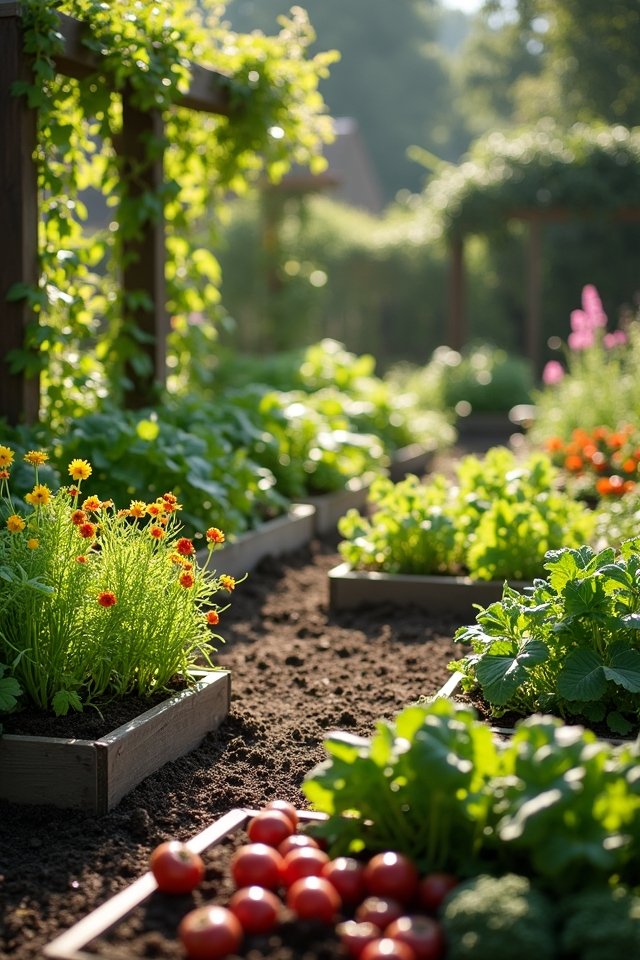
When it comes to gardening, knowing your climate zone can make all the difference! Think of your climate classification as the secret recipe for success! With temperature fluctuations affecting your plants’ growth, you can’t just wing it. Imagine trying to grow tropical herbs in a snowy landscape—yikes! Research your zone and its unique quirks. Does it get chilly at night, or is it a sun-soaked paradise? This knowledge lets you choose the best plants that will thrive, not just survive! Welcome innovation by experimenting with seasonal crops adapted to your climate. Get ready to plant with confidence! Are you ready to transform your raised beds into a flourishing Eden? Knowing your zone is the first step towards your gardening triumph!
Choosing the Right Plants for Each Season
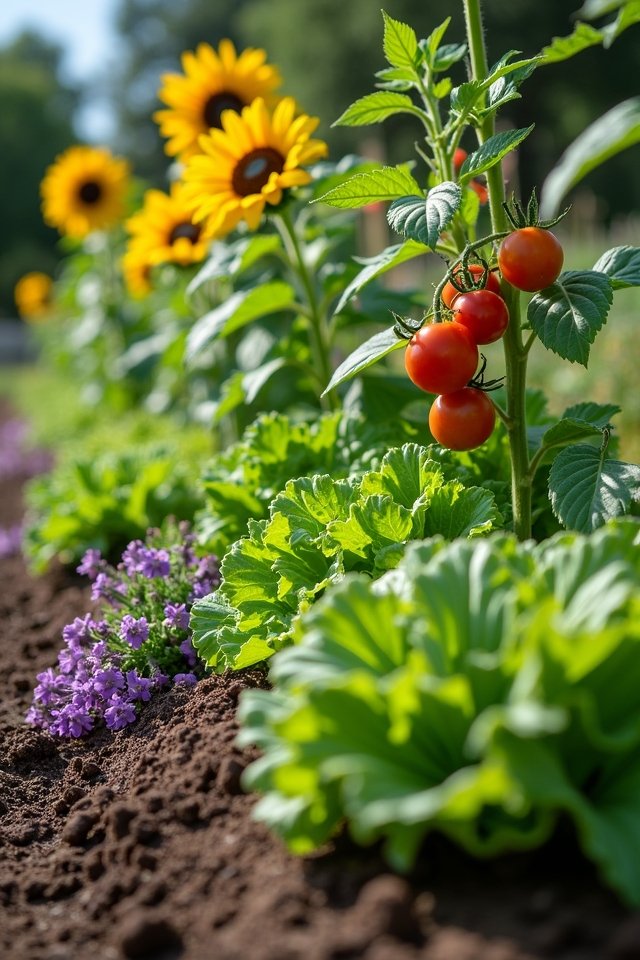
Once you’ve got a grip on your climate zone, it’s time to pick your plant pals for every season! Immerse yourself in the dazzling world of plant selection! For spring, why not sow vibrant radishes and fragrant peas? These little gems love the cool soil, bursting with life! Summer calls for luscious tomatoes and peppery basil, perfect for your caprese salad cravings! Who can resist a garden brimming with color? As autumn rolls around, welcome hearty kale and sweet carrots—they thrive in cooler temps, sweetening as frost kisses them. Finally, winter doesn’t mean barren beds! Try some stunning winter greens or even cozy garlic! Remember, seasonal varieties brighten your garden and taste extraordinary! So, what’s your next pick? Let’s get growing!
Preparing Your Raised Bed for Planting
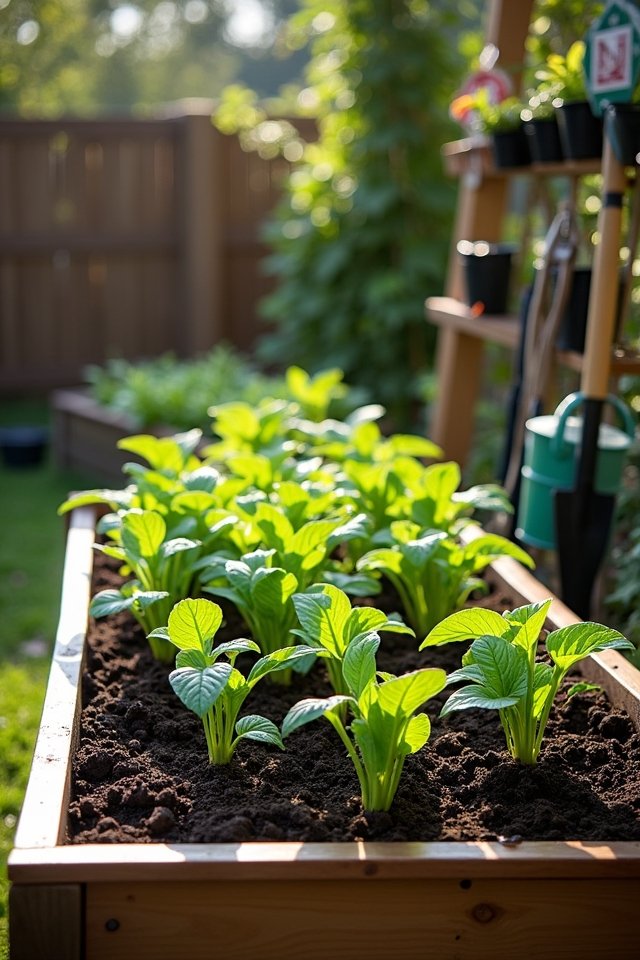
Before you immerse yourself in planting, getting your raised bed prepped is essential for a flourishing garden! Start with soil preparation: mix compost, fertilizer, and well-draining soil for that ideal blend. It’s like creating a gourmet meal for your plants! Next, think about your bed design. Confirm your raised bed has proper drainage and isn’t overcrowded—plants love their personal space, too! Give some thought to sun exposure; positioning can make or break your garden’s success. Finally, clear away any weeds and debris—nothing worse than unwelcome guests crashing your plant party! Remember, a little groundwork goes a long way in creating a vibrant oasis, buzzing with life. Ready to dig in? Let’s transform that garden!
Companion Planting Strategies
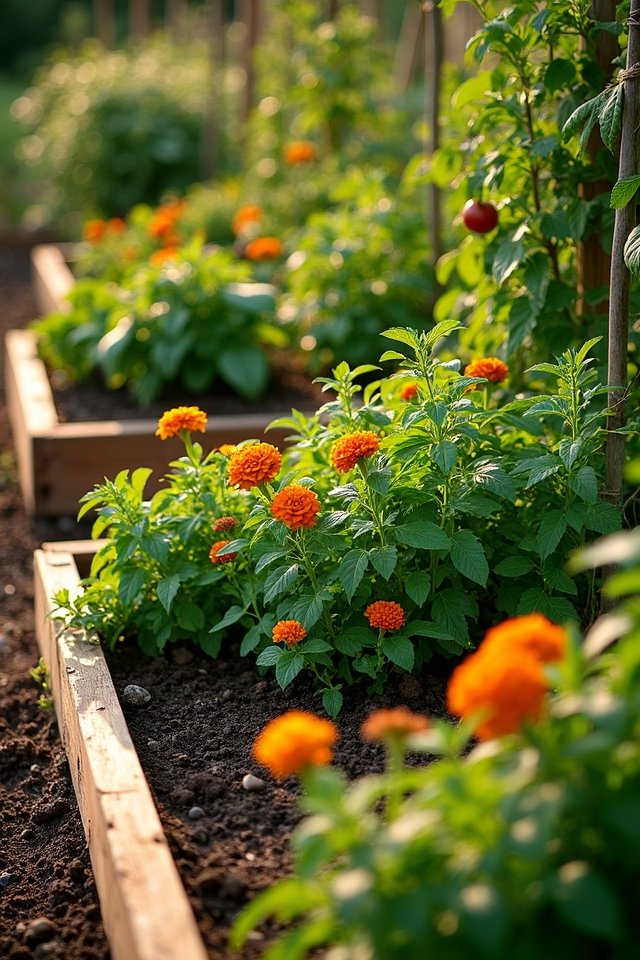
Companion planting isn’t just a trend; it’s like creating your very own plant dream team! Imagine planting fragrant basil alongside luscious tomatoes; they thrive together, boosting growth and flavor. This is where companion plant benefits shine! Some plants repel pests, while others attract helpful insects—like marigolds warding off pesky aphids.
Maintenance Tips Throughout the Season
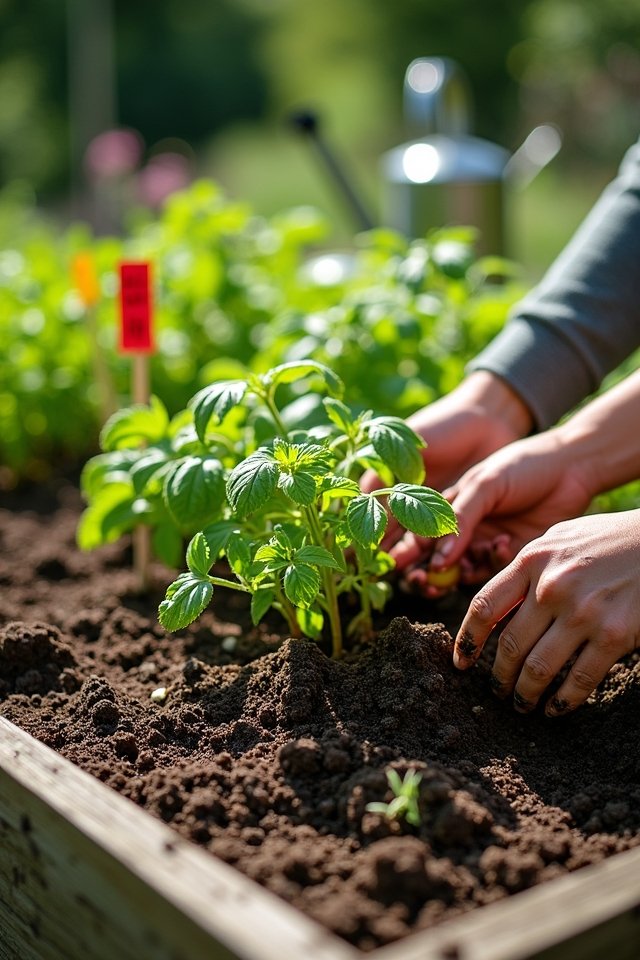
As summer sizzles on, keeping your raised beds in tip-top shape feels like a rewarding quest! Start with regular checks on soil health; it’s your garden’s backbone! Mix in compost or organic matter to keep nutrients flowing like a cool stream on a hot day. Next, nail that watering schedule—deep, less frequent watering is the secret! Think of it as giving your plants a revitalizing drink rather than a splash bath. A moisture gauge can be a gardener’s best friend, telling you when your plants need a thirst-quencher. And don’t forget to remove those pesky weeds; they’re like party crashers at your garden feast! With these tips, your raised beds will flourish all season long! Ready, set, grow!
Seasonal Pest Control Techniques
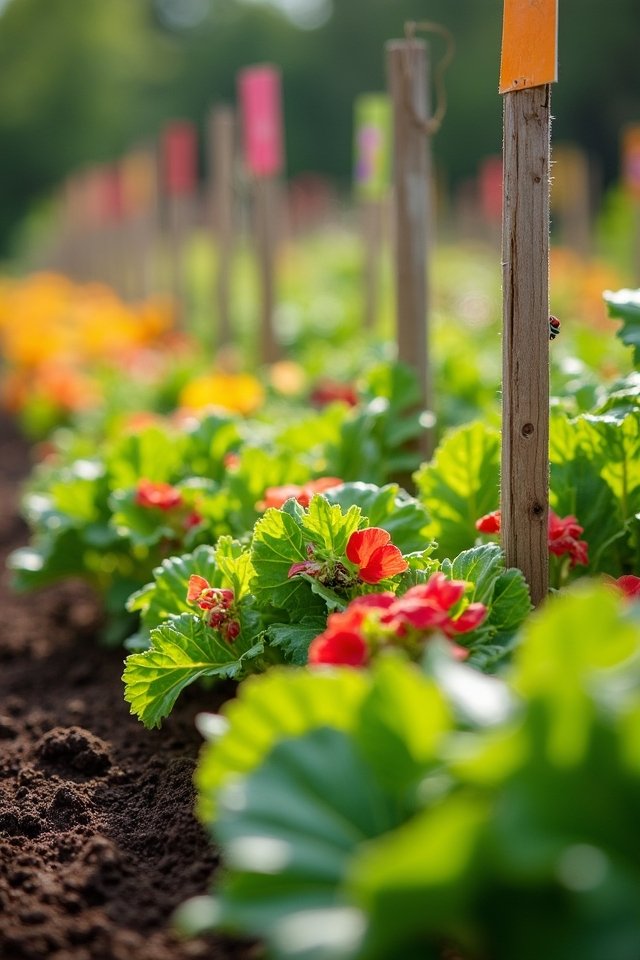
When it comes to your beloved raised beds, keeping pests at bay is essential for a thriving garden! Imagine a battalion of friendly ladybugs swooping in—those natural predators feed on pesky aphids like it’s their favorite treat. You can also mix things up with organic repellents; think of them as a gentle shield against unwanted invaders. A garlic spray? It works like magic! Just blend garlic with water, let it steep, and you’ve got yourself a potent potion! And don’t forget companion planting; marigolds can deter nematodes—what a powerful duo! With these innovative techniques, you’ll not only protect your plants but also adopt a healthier, more sustainable garden. Ready to outsmart those pesky critters? You’ve got this!
Harvesting and Storing Your Crops
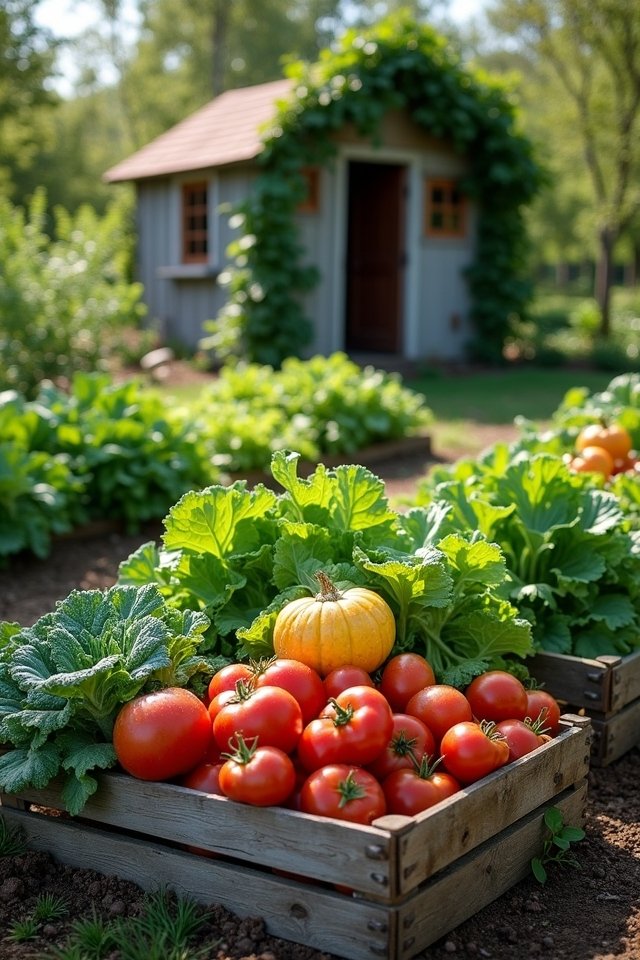
After you’ve successfully kept those pesky critters away, it’s time to revel in your gardening glory—harvesting your crops! Picture the vibrant red tomatoes, crisp green beans, and gleaming peppers waiting just for you. When you gather your bounty, use the principles of crop rotation to guarantee your next harvest is even more fruitful.
Now, let’s talk storage techniques! For root vegetables like carrots, a moist sand bed works wonders, while leafy greens love a damp paper towel in a bag. Keep an eye on humidity—it’s the secret to freshness. And don’t forget to label your jars of home-canned goodies! Remember, proper storage means enjoying your garden’s delights long after the last frost has kissed the ground goodnight!
Frequently Asked Questions
How Do I Improve Soil Drainage in My Raised Beds?
Got a soggy situation in your raised beds? Don’t fret! Improving soil drainage isn’t rocket science. Start by mixing some coarse sand and perlite into your soil for those effective drainage solutions. You might also try adding organic amendments like shredded leaves or compost. They’ll help aerate the soil, creating a dreamy environment for your roots. Just imagine those happy, thriving plants! With a bit of effort, your raised beds will drain like a champ!
What Tools Are Essential for Raised Bed Gardening?
When you immerse yourself in raised bed gardening, a few essential tools can make your life easier and your plants happier! Grab a good trowel—it’s like your trusty sidekick for planting techniques! You’ll also need a hand rake to fluff up the soil, shears for snipping, and a sturdy hose for watering. And don’t forget gloves—after all, no one wants dirty hands! Ready to dig in? Your garden awaits!
Can I Grow Perennials in Raised Beds?
Picture a vibrant raised bed bursting with colorful coneflowers and elegant lavender. Those perennial varieties not only look stunning but also return year after year with minimal fuss. Try layering your planting techniques by tucking in lower-growing herbs around taller blooms—it’s like creating a living masterpiece! There’s nothing quite like stepping into your garden and inhaling the delightful aroma of fresh flowers and herbs. Isn’t gardening just magical?
How Can I Extend the Growing Season in My Garden?
You can definitely extend your growing season with some clever seasonal techniques! Consider using a small greenhouse—it’s like a cozy hug for your plants! If that’s not an option, row covers can act like a warm blanket on chilly nights. You might even try cold frames, which are like mini greenhouses! With these tricks, your veggies will be thriving and ready to bring delicious flavors to your table long after summer’s gone! And who doesn’t want that?
What Are the Best Cover Crops for Winter?
Remember when winter meant bare dirt and a garden ghost town? Well, let’s change that! For winter cover crops, try winter legumes like clover or vetch. They’re like a cozy blanket for your soil, improving its health while fixing nitrogen! Plus, their roots aerate the ground, making it even better for next season. Imagine lush greenery instead of a dull landscape! Who wouldn’t want that? Your garden will thank you come spring!
